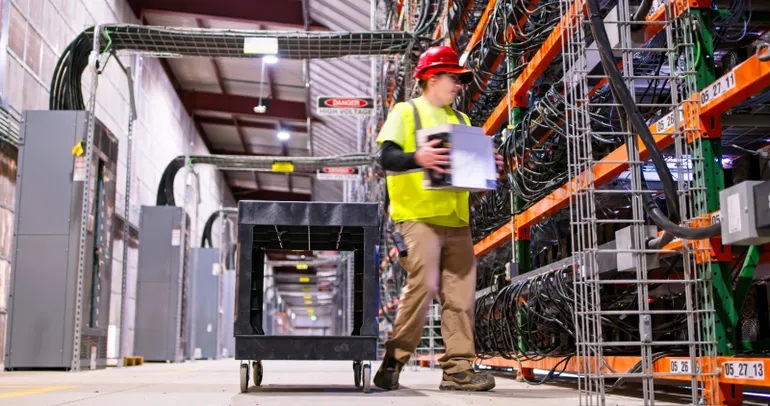FERC approves SPP ‘provisional load’ interconnection review process

The Federal Energy Regulatory Commission on Friday approved a Southwest Power Pool proposal — called the “provisional load process” — that will let the grid operator study potential data centers and other load additions even when there isn’t available power to serve the new facilities.
SPP’s proposed process “will facilitate transmission customers’ efforts to appropriately and more expeditiously plan to serve their future loads,” FERC said.
Recently, SPP has been unable to study many transmission customers’ requests for load additions because they lacked power supplies to cover their 10-year load forecast, including the load addition — a requirement under the grid operator’s rules for load interconnection studies to move ahead, the grid operator said in its June 4 proposal at FERC.
Under the approved provisional load process, SPP will consider a transmission customer’s planned generation when studying a request to add load. The process will give transmission customers time to procure firm transmission service for planned generation needed to serve new load, according to the grid operator.
SPP contends the provisional load process will encourage generation resources to be built, according to the grid operator’s application. Also, the process may attract other load interconnection customers to the SPP region, the grid operator said.
SPP runs the power grid and wholesale electricity markets across parts of 14 states from Texas to North Dakota.
Under the provisional load process, the costs of network upgrades needed to interconnect new load will be assigned to the transmission customer until planned generation has been included in the transmission customer’s transmission service agreement, according to FERC. After that, any remaining network upgrade costs will be rolled into zonal or regional rates.
The cost allocation plan protects transmission customers from paying for network upgrades for generating resources that change from the original plan or that don’t get built, according to SPP.
Separately, SPP is advancing a 90-day interconnection study process for “high impact large load” that will be paired with new generation or for interconnecting large loads with current or planned generation. The policy, approved by SPP’s board last month, will require FERC approval.
Like other grid operators, SPP has seen a jump in requested load additions, including large loads like data centers and manufacturing plants, according to the grid operator.
Since 2020, SPP has received 26.4 GW of load interconnection requests larger than 100 MW, including 9 GW disclosed as data centers, the grid operator said in its proposal at FERC.
However, only a portion of requested interconnections move forward. In 2022, for example, SPP received 10.1 GW of interconnection study requests but transmission customers signed service agreements totaling just 3.9 GW that year, according to SPP.
utilitydive





